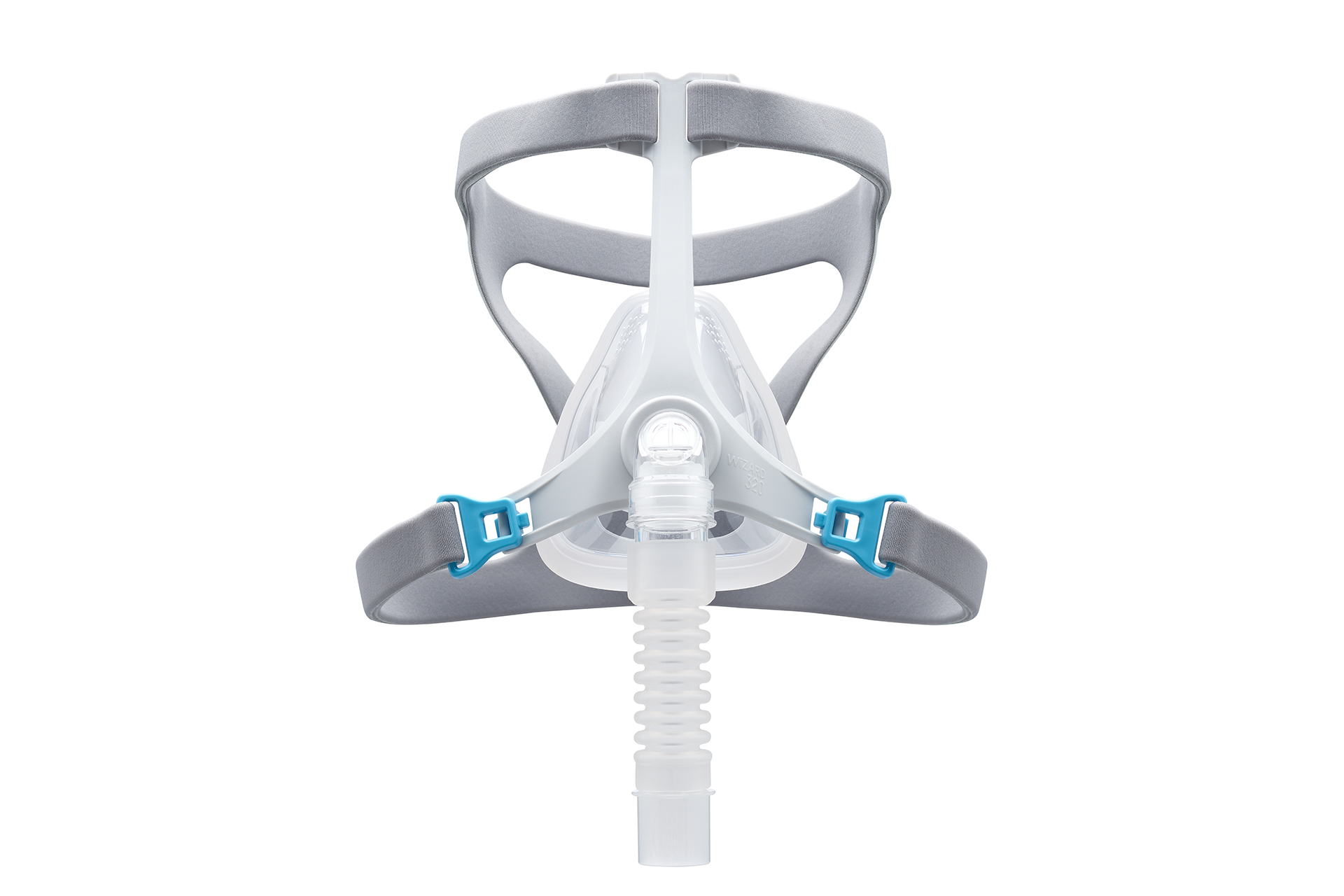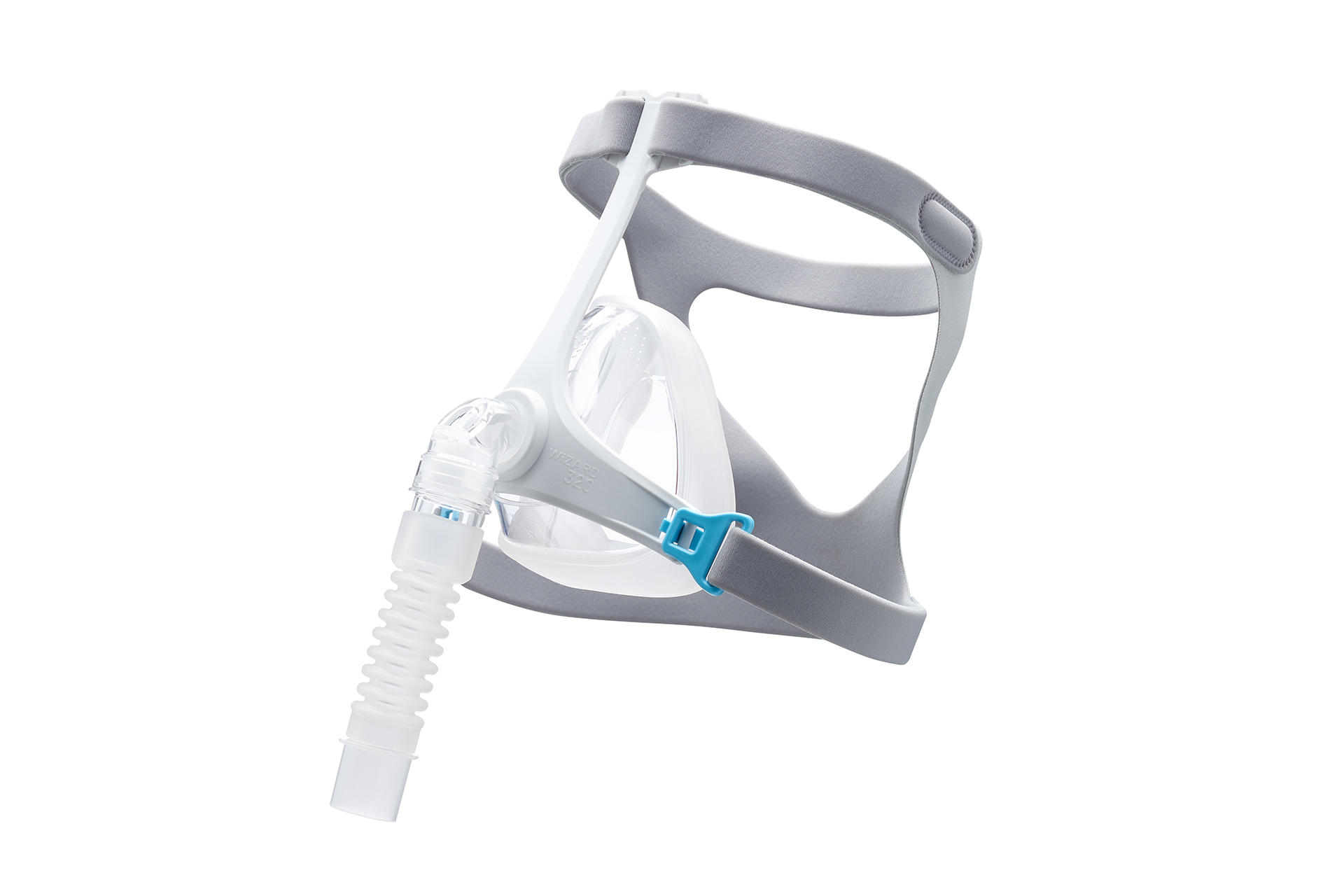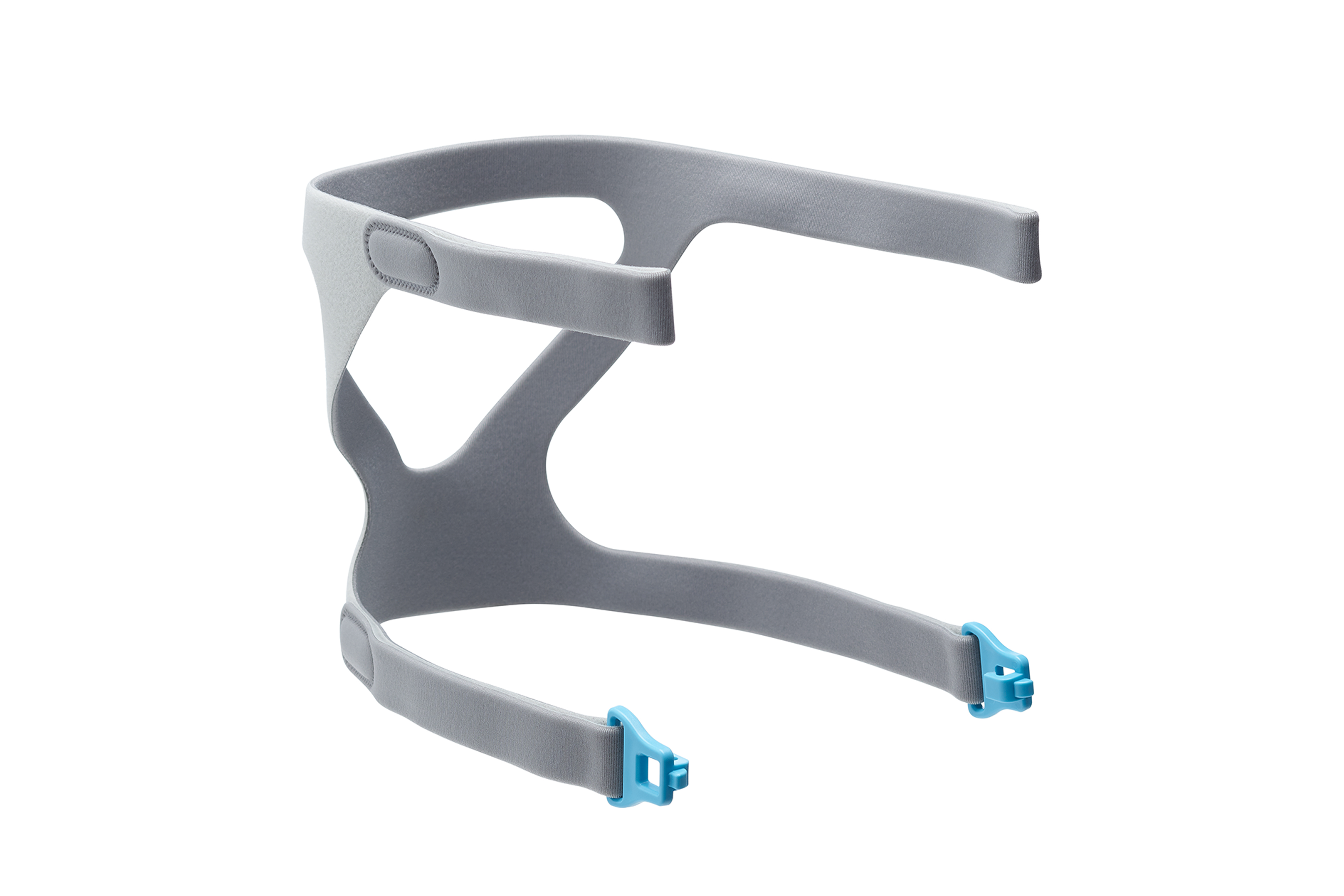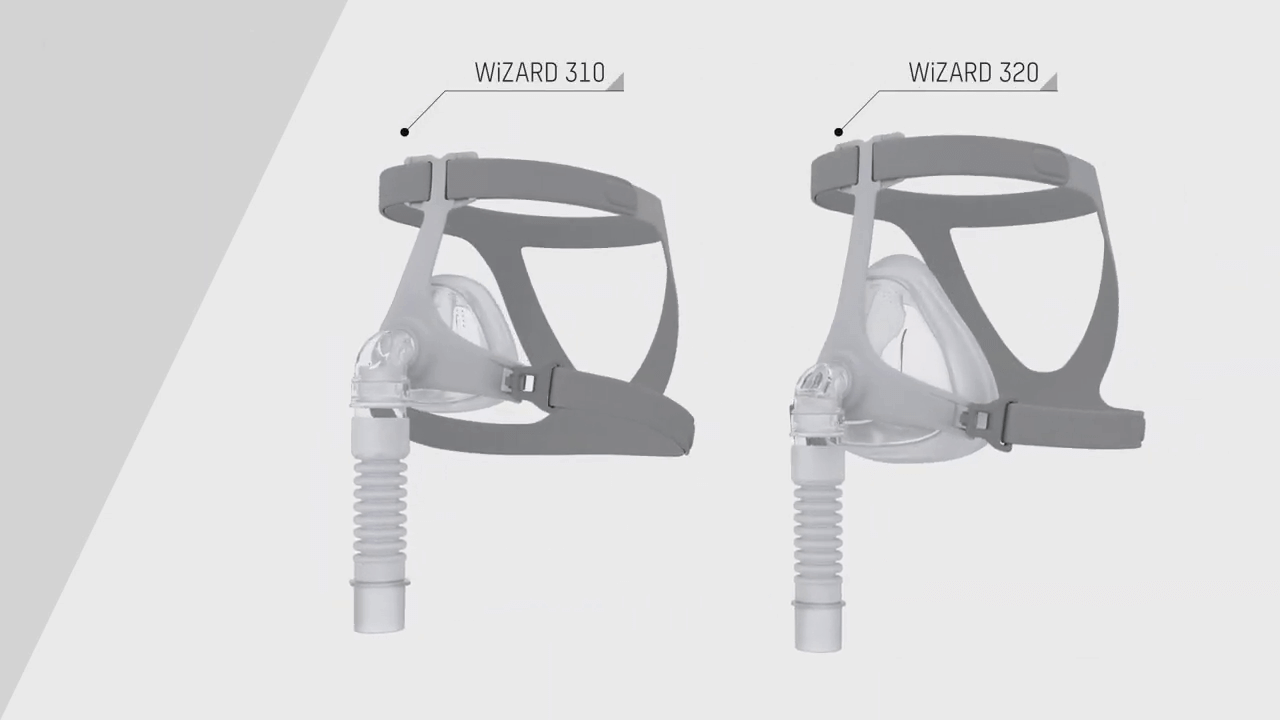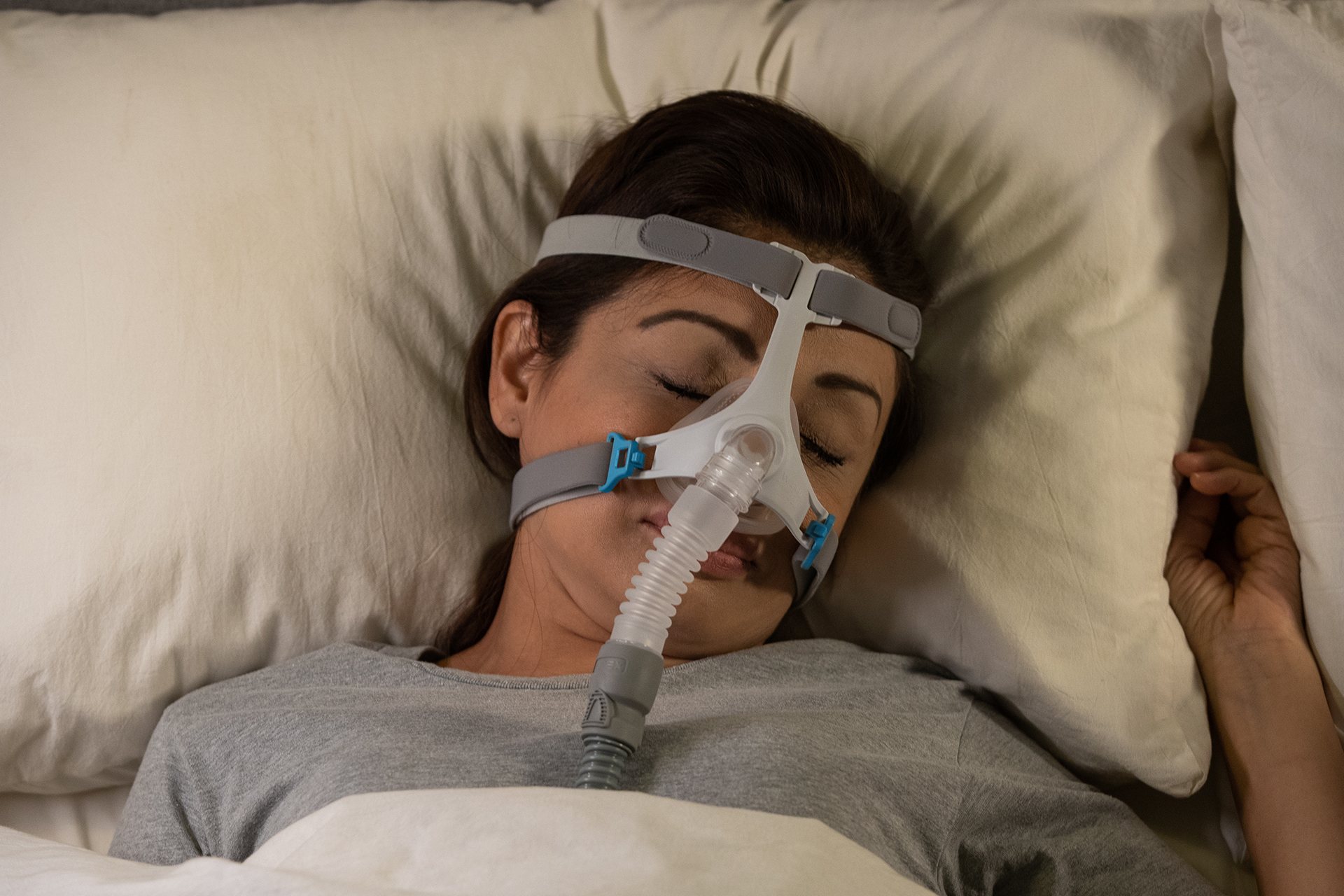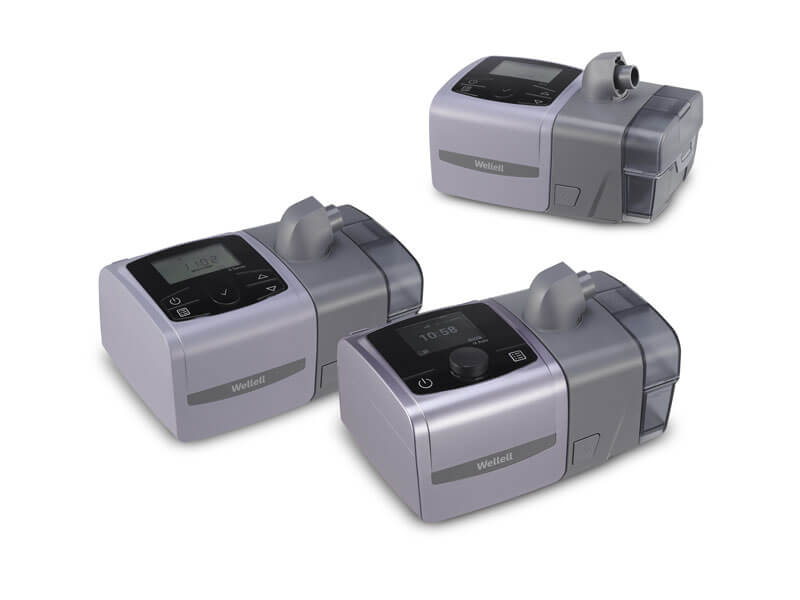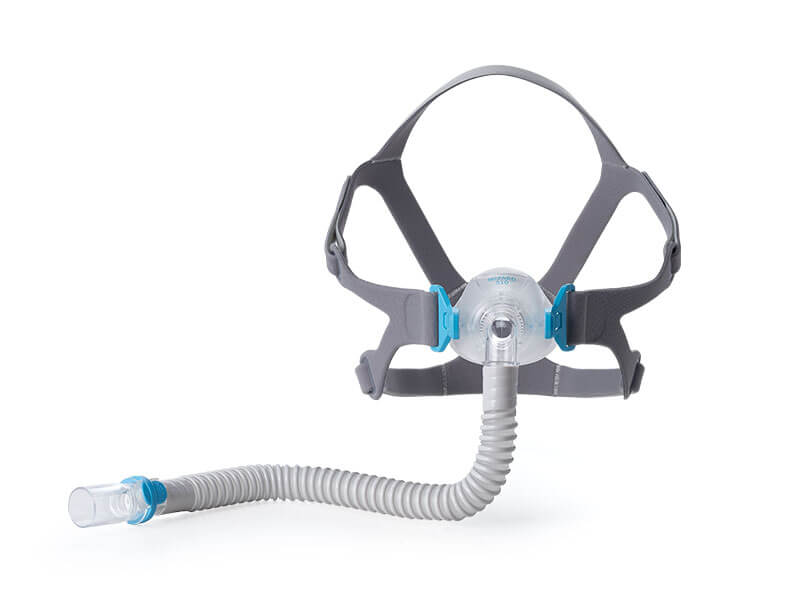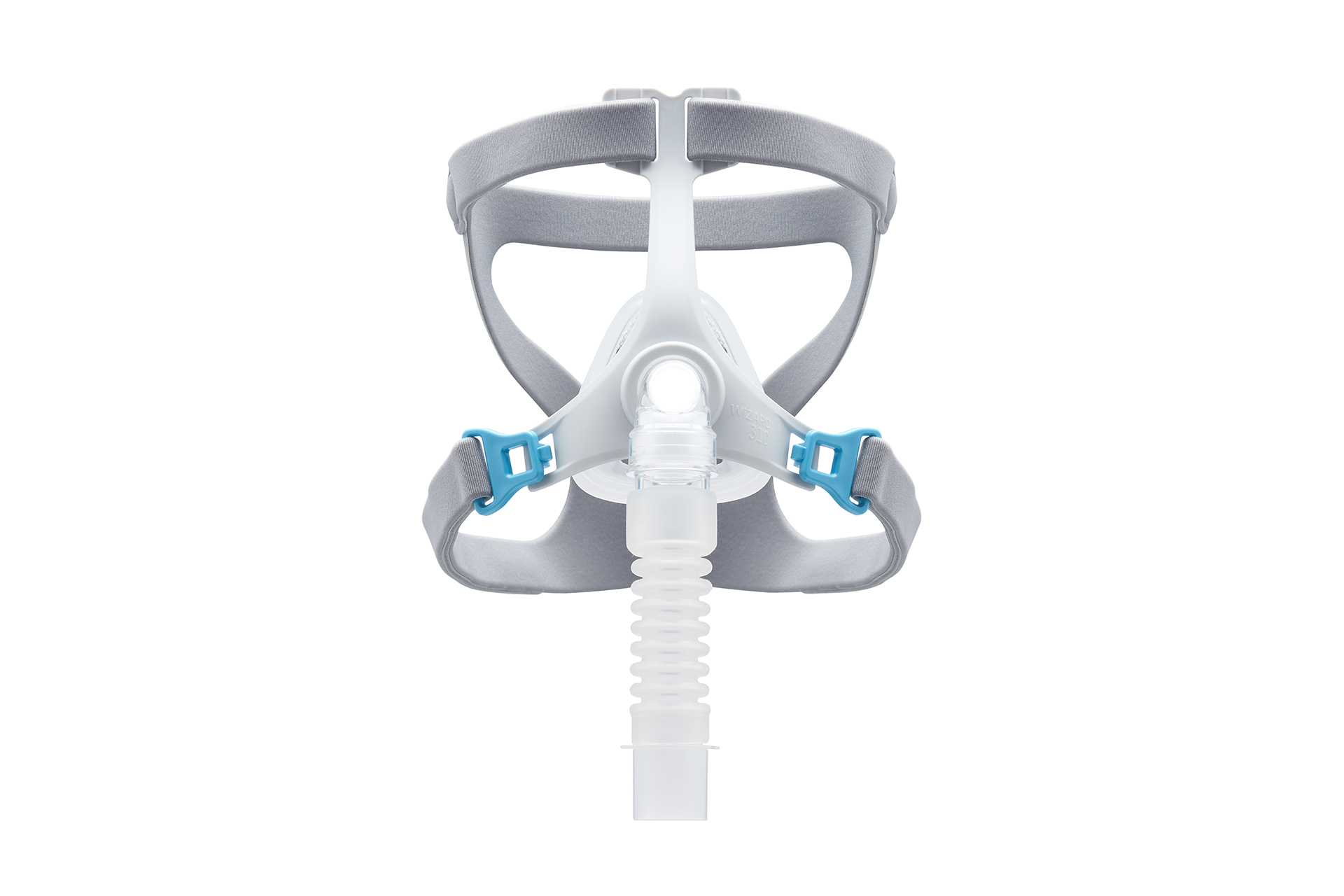WiZARD 320
Comfort and stability for sleep-disorder breathing therapy — Improving sleep quality and long-term therapy compliance.
Contact Us For More Info
Sleep apnea affects over 1.3 billion people worldwide.1 Not getting enough sleep over time significantly increases an individual's risk of developing or worsening chronic diseases, including obesity, bodily pain, depression, heart disease (that leads to an early death), arthritis, diabetes, stroke, lung disease, osteoporosis, and memory problems.2,3 Full masks provide stable air pressure and a humid climate for the nose, mouth, and airway, improving comfort to help individuals get the recommended 7 hours of sleep.4
WiZARD 320's face-conforming cushion, zero-disturbance ventilation system, pain-free forehead support, snap-on and -off parts, and tubing safety valve improve ease-of-use and comfort, allowing users to integrate CPAP into their daily routine with confidence quickly.
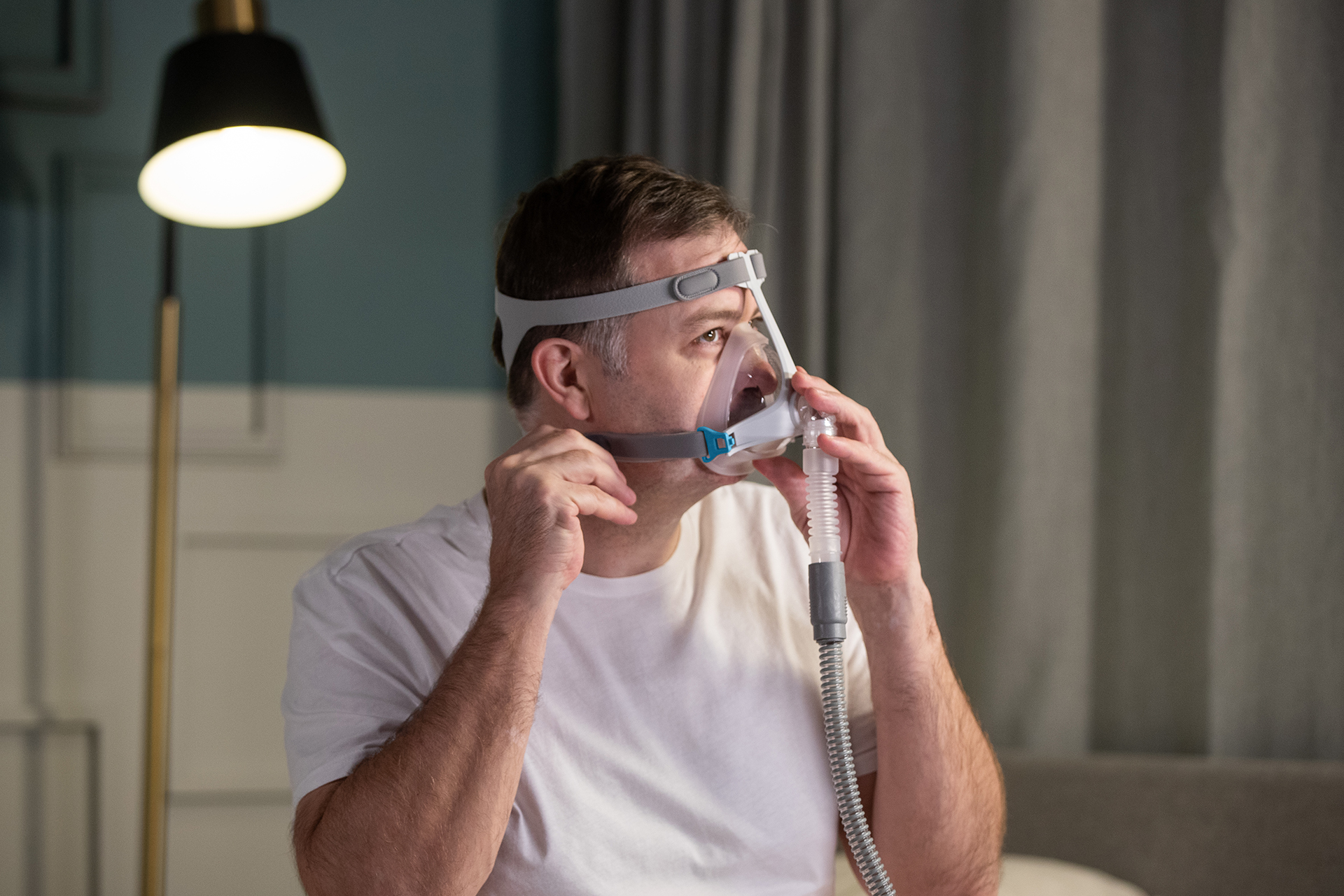
Sleep with Open-Mouth Undisturbed
- Cushion shelters mouth and nose with evenly distributed pressure against the area, supporting comfort for all user types.
- Proprietary ventilation system directs expired airflow away from the partner's face and eliminates noise pollution.
- Frame with flexible, breathable, and soft fabric keeps the shearing against the forehead to a minimum for a pain-free experience.
- Each part assembles easily with non-magnetic snap-on and -off joints, allowing hassle-free cleaning, replacing, storing, and transporting.
- Tubing's safety valve ensures users maintain adequate airflow and prevent choking when the CPAP machine powers off suddenly.
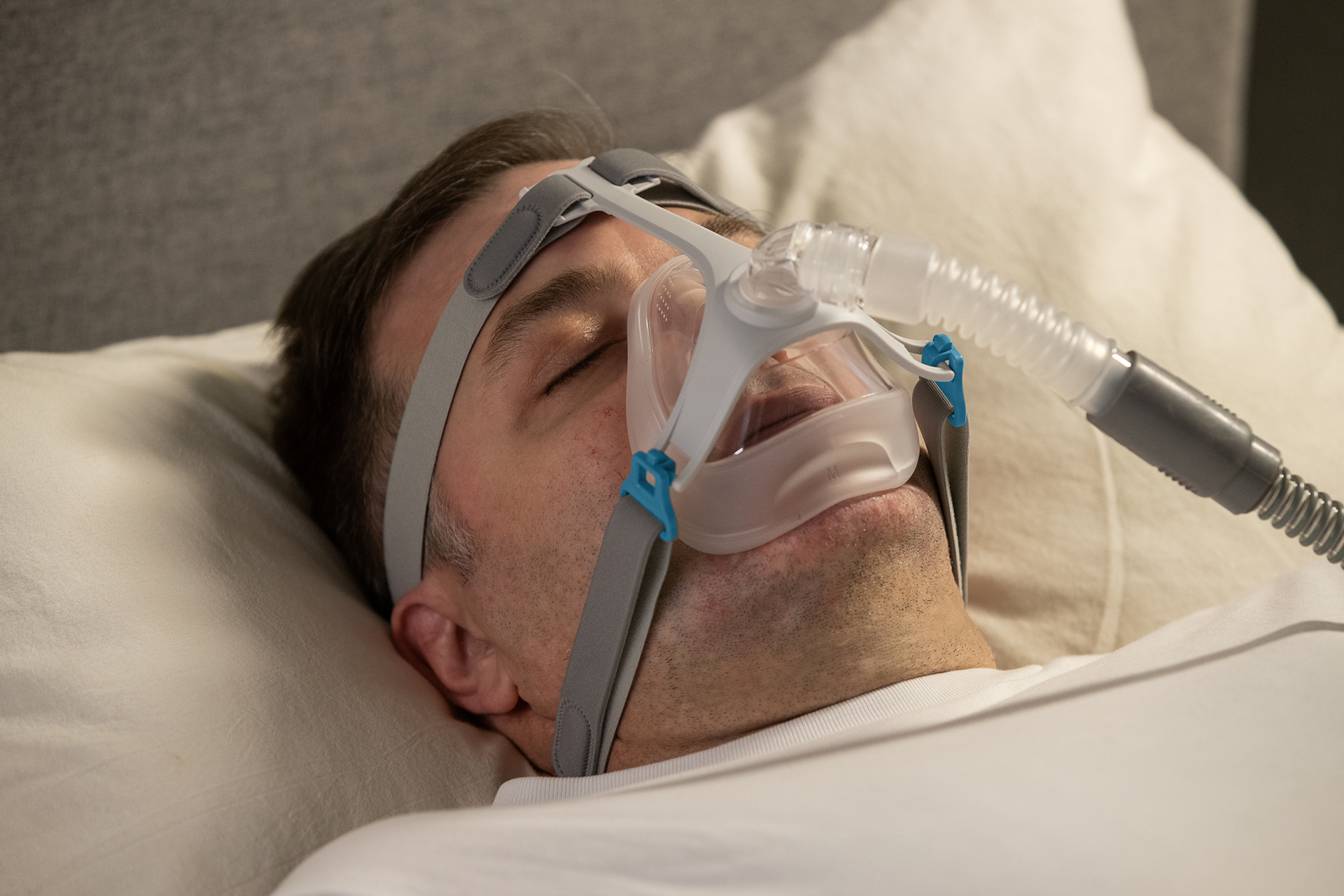
Even distributing pressure across the skin around the nose and mouth ensures users hours of comfort and prevents markings.
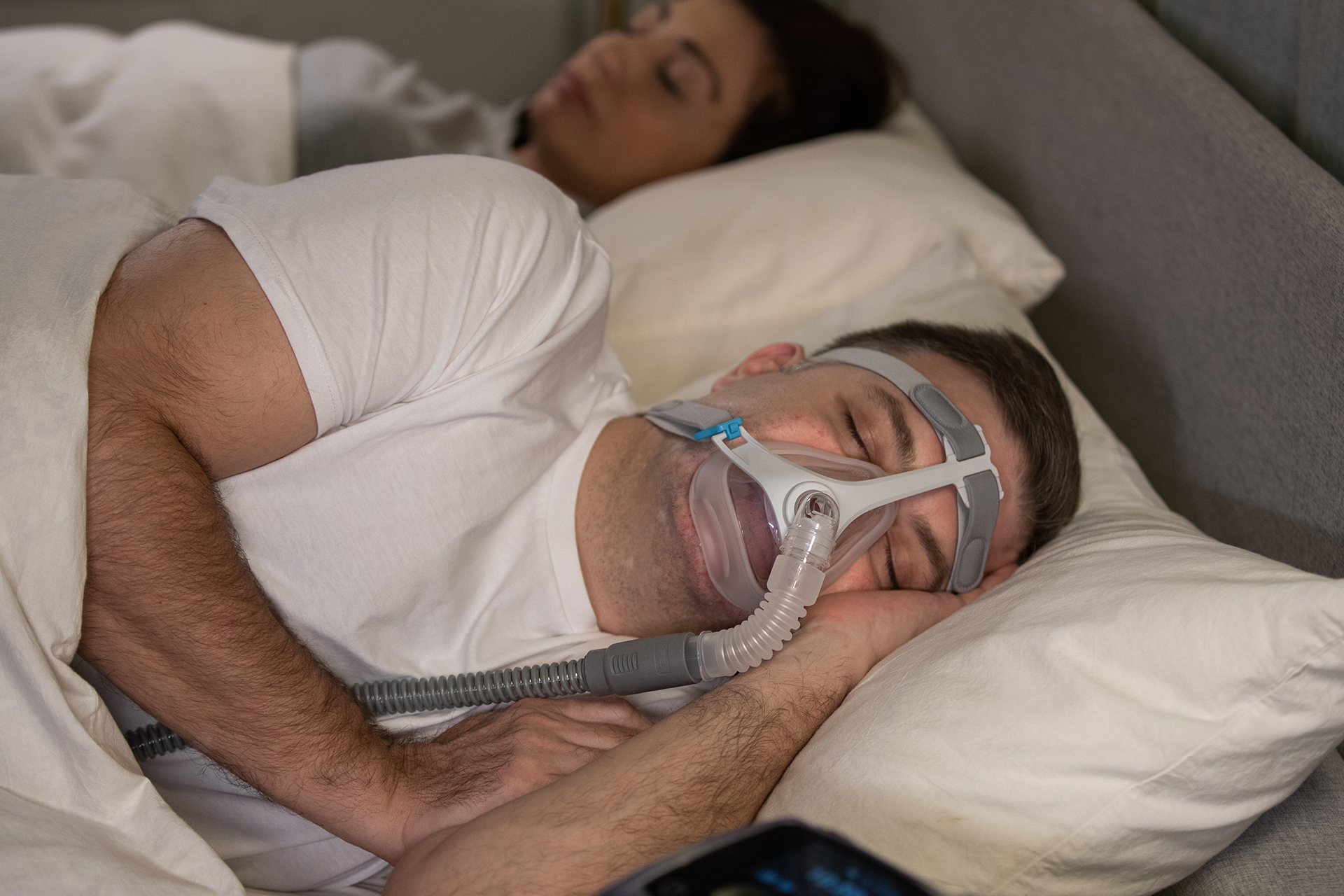
Reducing noise provides the user and their partner with a distraction-free environment to fall asleep quickly.
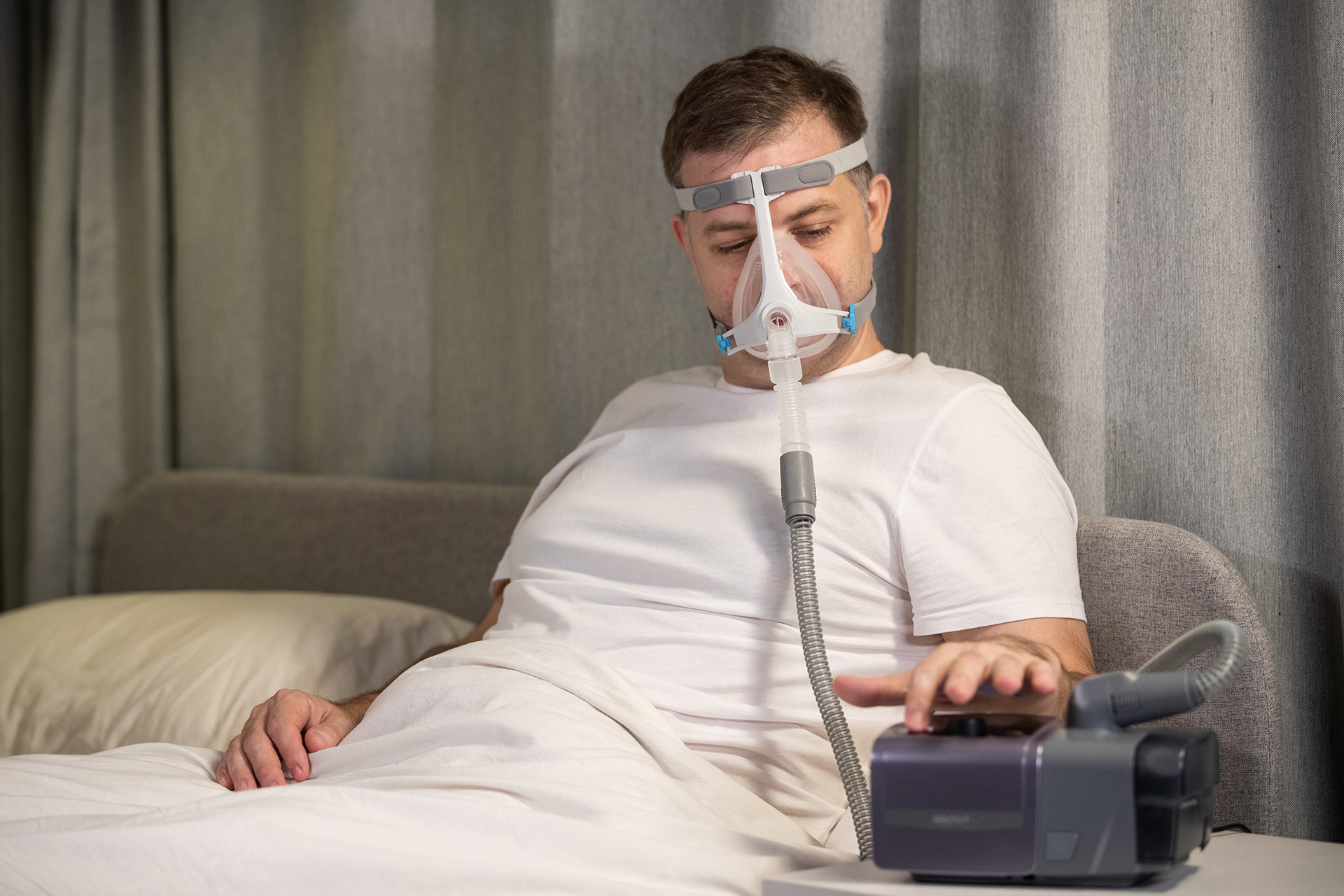
Flexible and pain-free frames allow more mobility during leisure activities and sleep, improving the therapy experience.
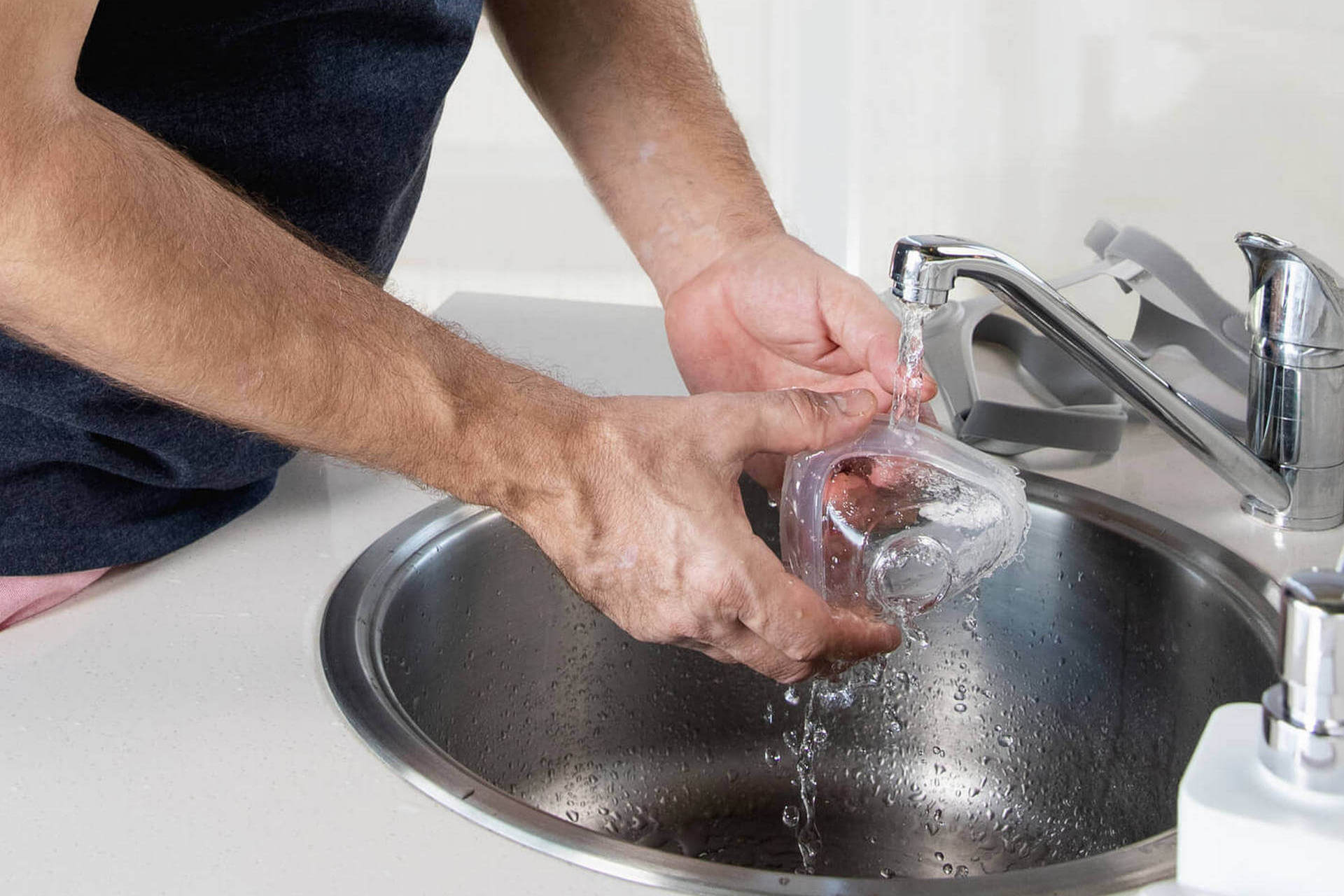
Easy to assemble parts improves the convenience for maintenance, cleaning, packing, and replacing parts.
| WiZARD 320 | ||
|---|---|---|
| Type | Full Face Mask | |
| Acceptable Therapy Pressure | 4-40 cmH2O | |
| Mask Size | S, M, L | |

Sleep with Open-Mouth Undisturbed
- Cushion shelters mouth and nose with evenly distributed pressure against the area, supporting comfort for all user types.
- Proprietary ventilation system directs expired airflow away from the partner's face and eliminates noise pollution.
- Frame with flexible, breathable, and soft fabric keeps the shearing against the forehead to a minimum for a pain-free experience.
- Each part assembles easily with non-magnetic snap-on and -off joints, allowing hassle-free cleaning, replacing, storing, and transporting.
- Tubing's safety valve ensures users maintain adequate airflow and prevent choking when the CPAP machine powers off suddenly.

Even distributing pressure across the skin around the nose and mouth ensures users hours of comfort and prevents markings.

Reducing noise provides the user and their partner with a distraction-free environment to fall asleep quickly.

Flexible and pain-free frames allow more mobility during leisure activities and sleep, improving the therapy experience.

Easy to assemble parts improves the convenience for maintenance, cleaning, packing, and replacing parts.
Increasing user comfort, experience, and confidence, motivating adherence to therapy and better sleep.
No. Each part of the mask can be purchased and replaced as singular units so, no need to buy a whole new mask.
We recommend cleaning the cushion daily and washing the headgear weekly. Refer to the user manual for the complete cleaning instructions. We recommend avoiding cleaning the mask and the headgear with a high-temperature solution such as the dishwasher to prevent damaging the parts.
Yes. The WiZARD 320 does not have parts made from latex, PVC, or DEHP and is ISO 10993 biocompatibility test verified.
Reference
- Benjafield, Adam V et al. “Estimation of the global prevalence and burden of obstructive sleep apnoea: a literature-based analysis.” The Lancet. Respiratory medicine vol. 7,8 (2019): 687-698. doi:10.1016/S2213-2600(19)30198-5
- Foley, Daniel et al. “Sleep disturbances and chronic disease in older adults: results of the 2003 National Sleep Foundation Sleep in America Survey.” Journal of psychosomatic research vol. 56,5 (2004): 497-502. doi:10.1016/j.jpsychores.2004.02.010
- Yaggi, H Klar et al. “Obstructive sleep apnea as a risk factor for stroke and death.” The New England journal of medicine vol. 353,19 (2005): 2034-41. doi:10.1056/NEJMoa043104
- Ryan, Silke et al. “Effects of heated humidification and topical steroids on compliance, nasal symptoms, and quality of life in patients with obstructive sleep apnea syndrome using nasal continuous positive airway pressure.” Journal of clinical sleep medicine : JCSM : official publication of the American Academy of Sleep Medicine vol. 5,5 (2009): 422-7.

